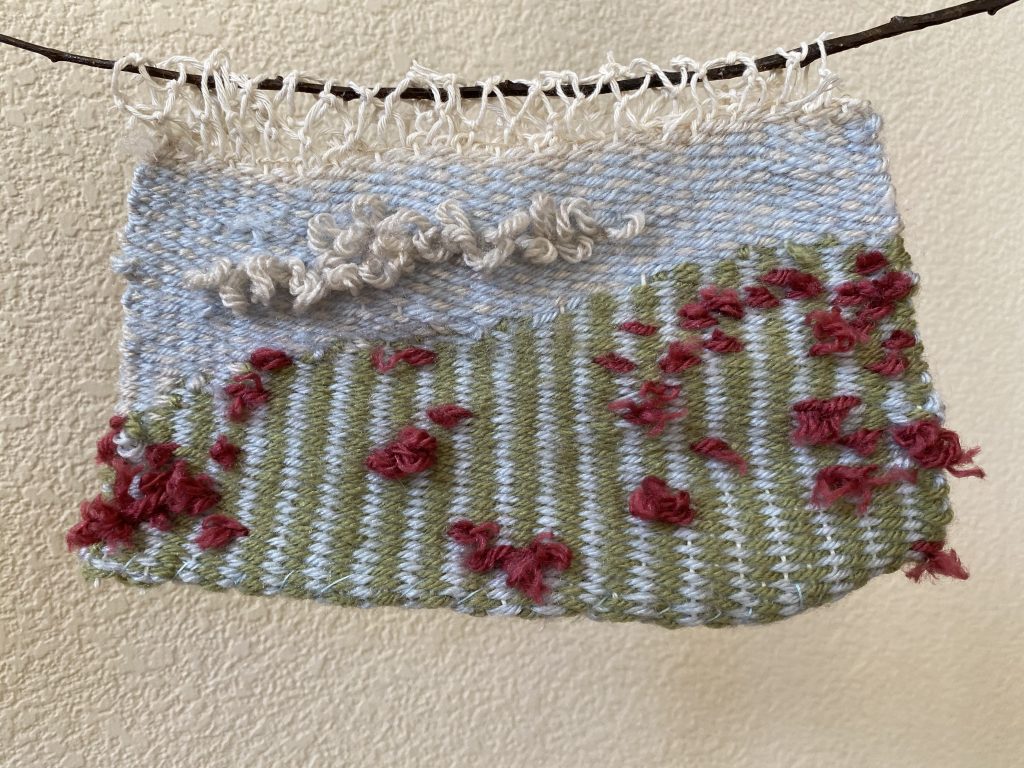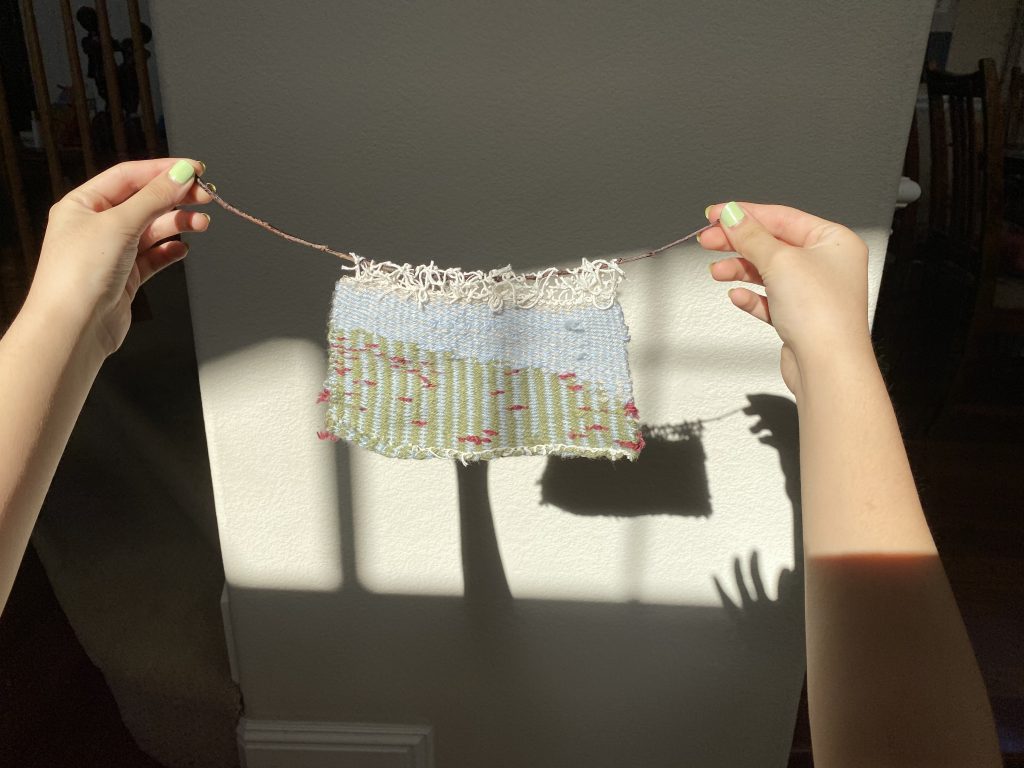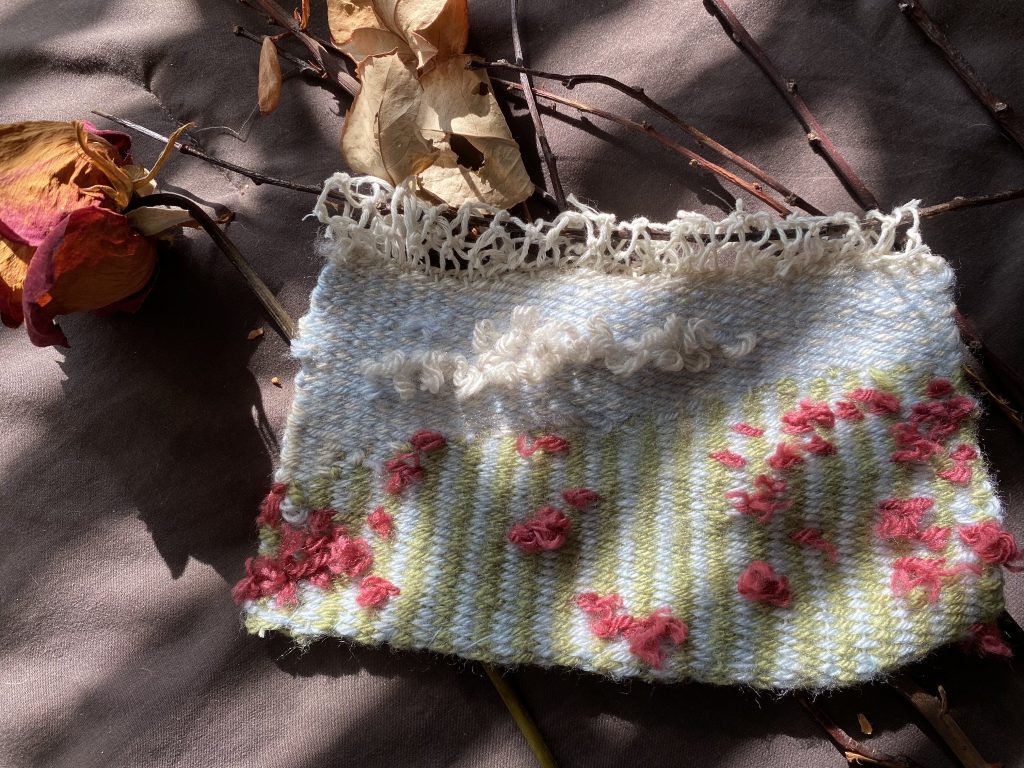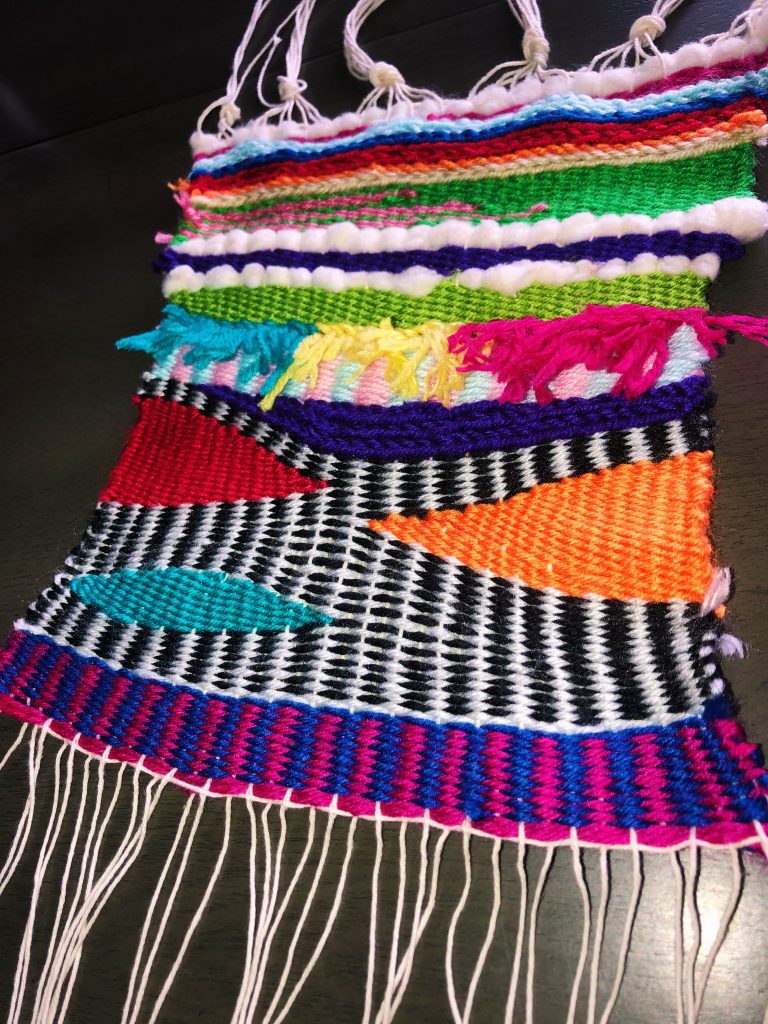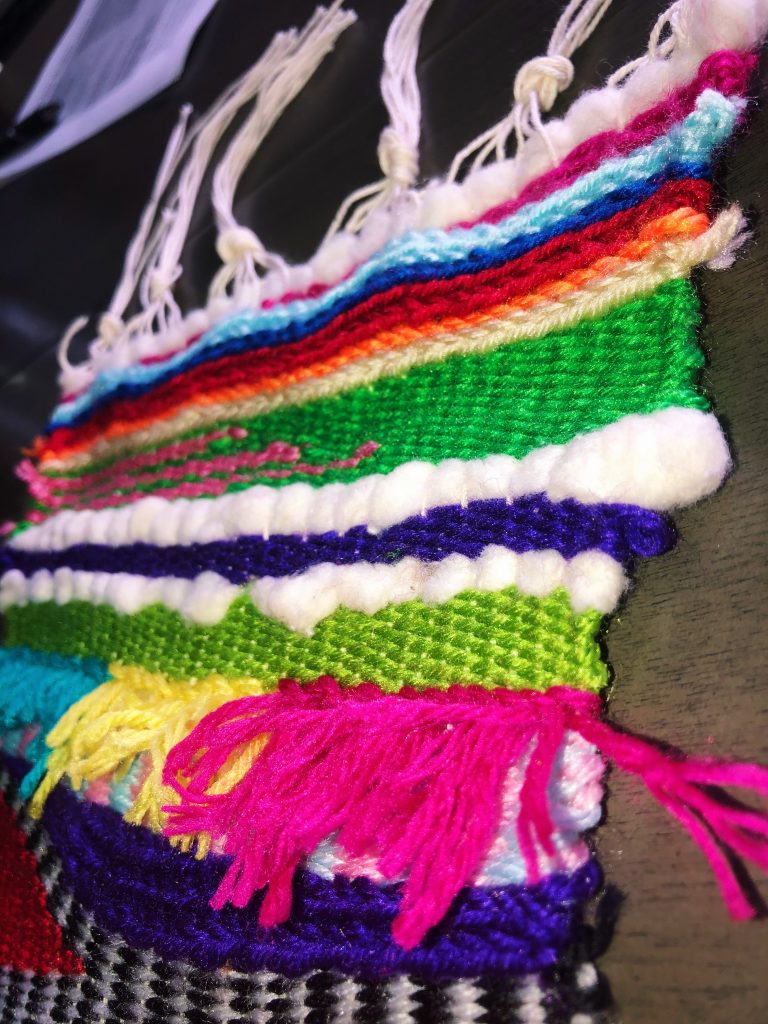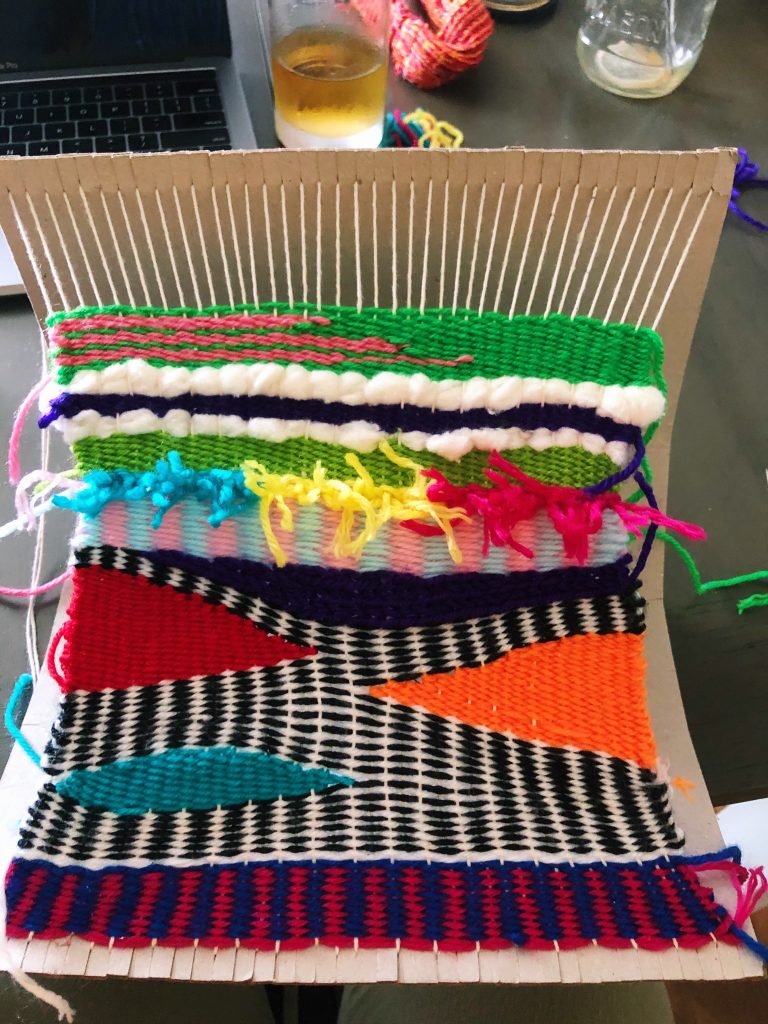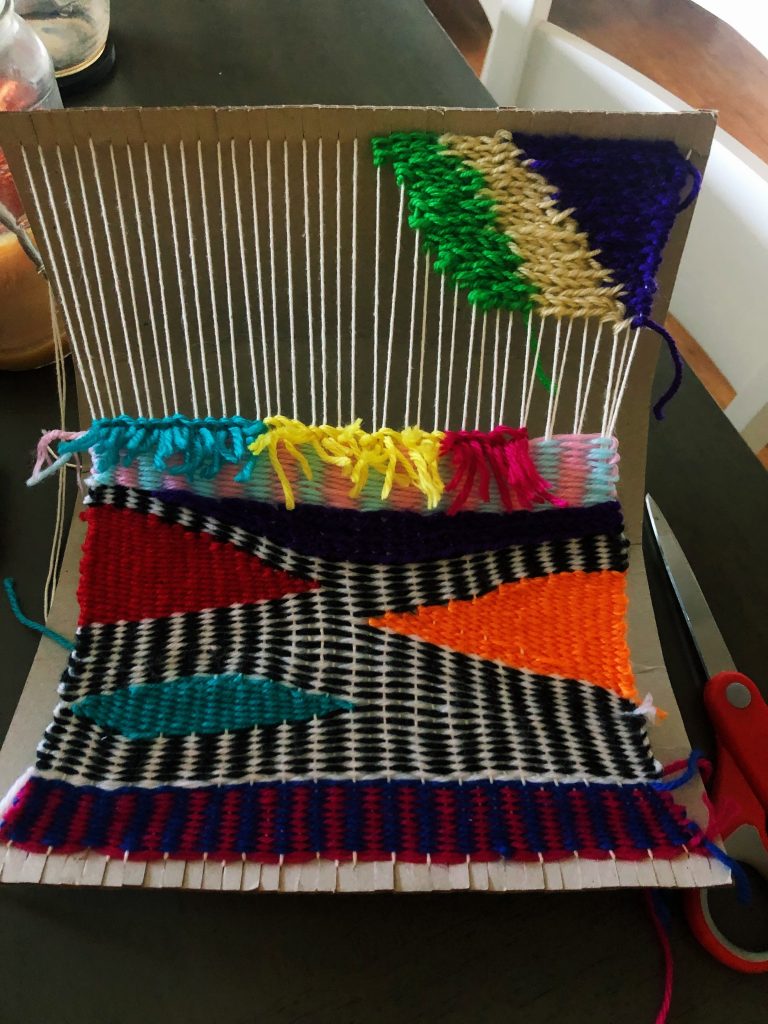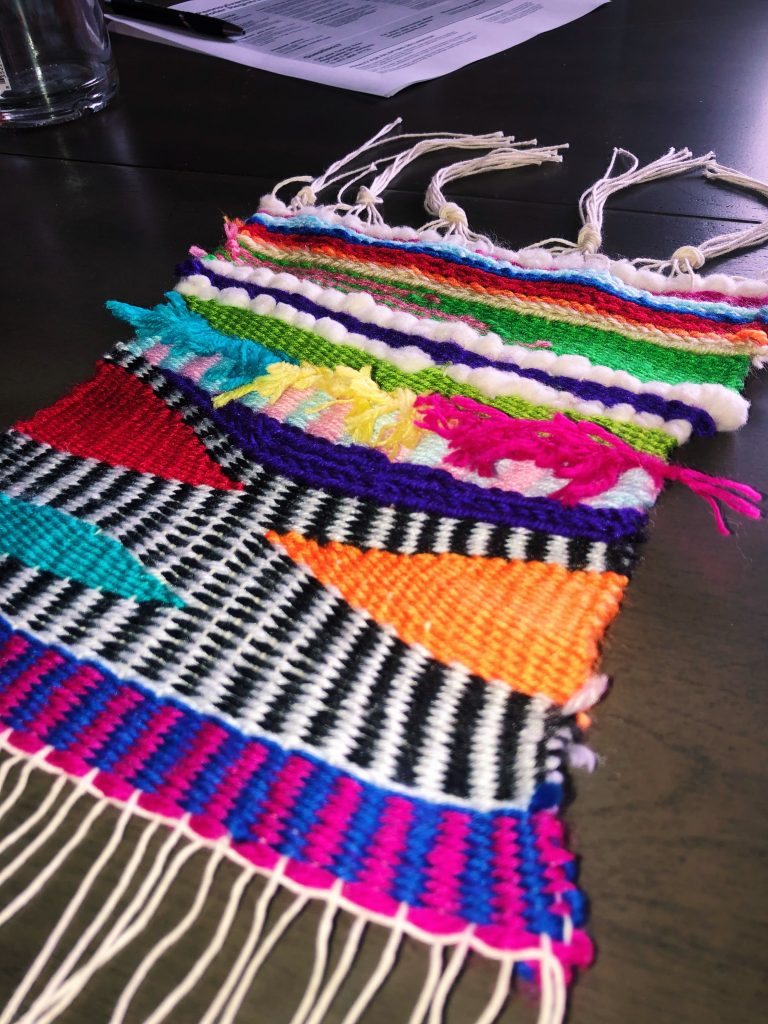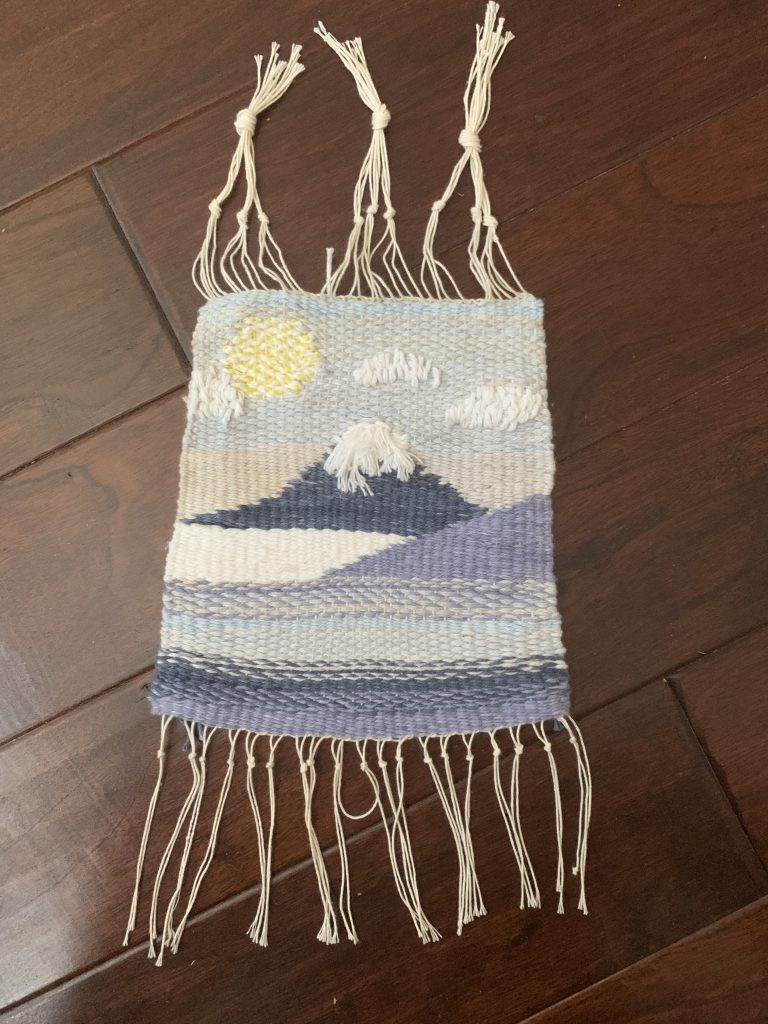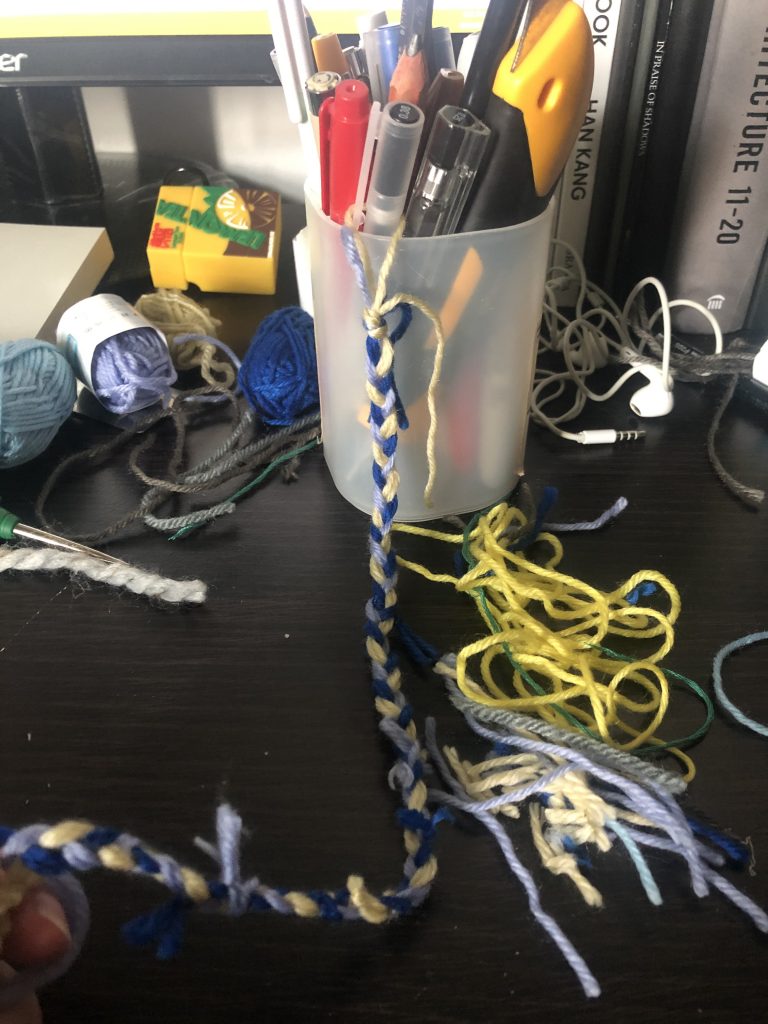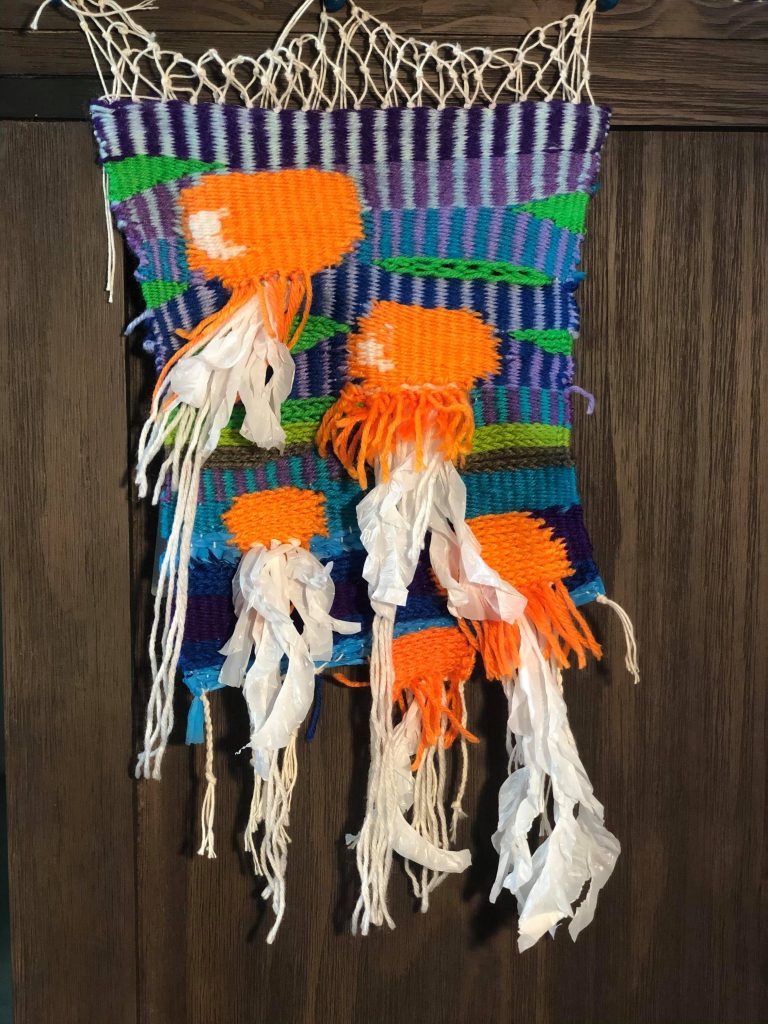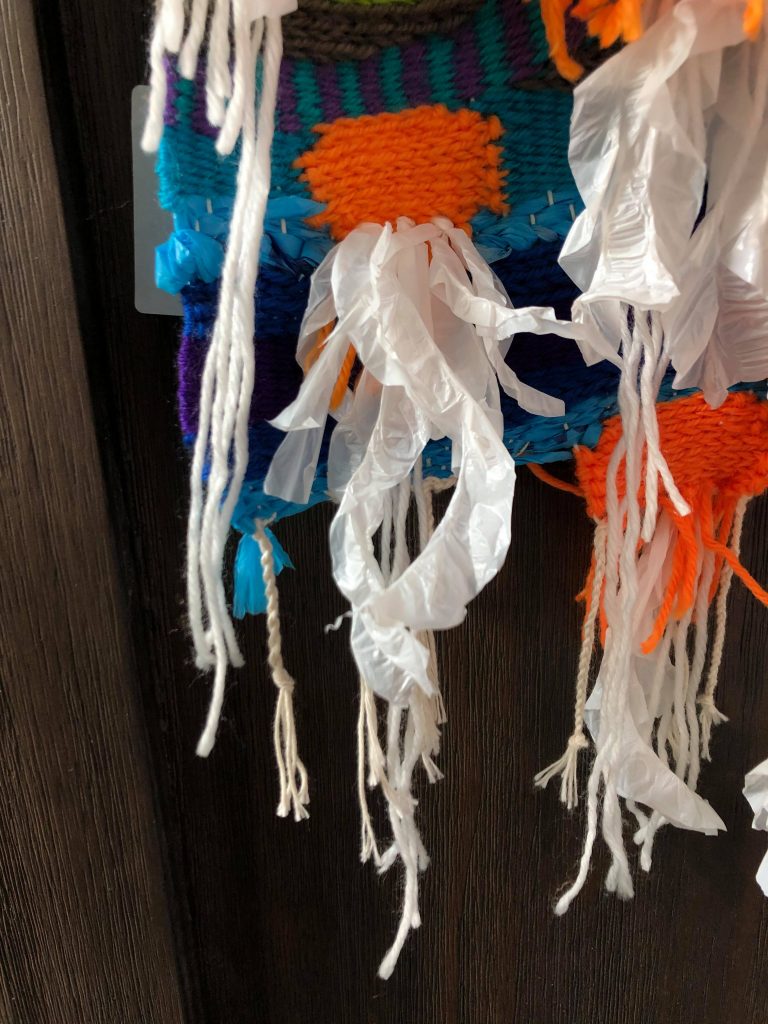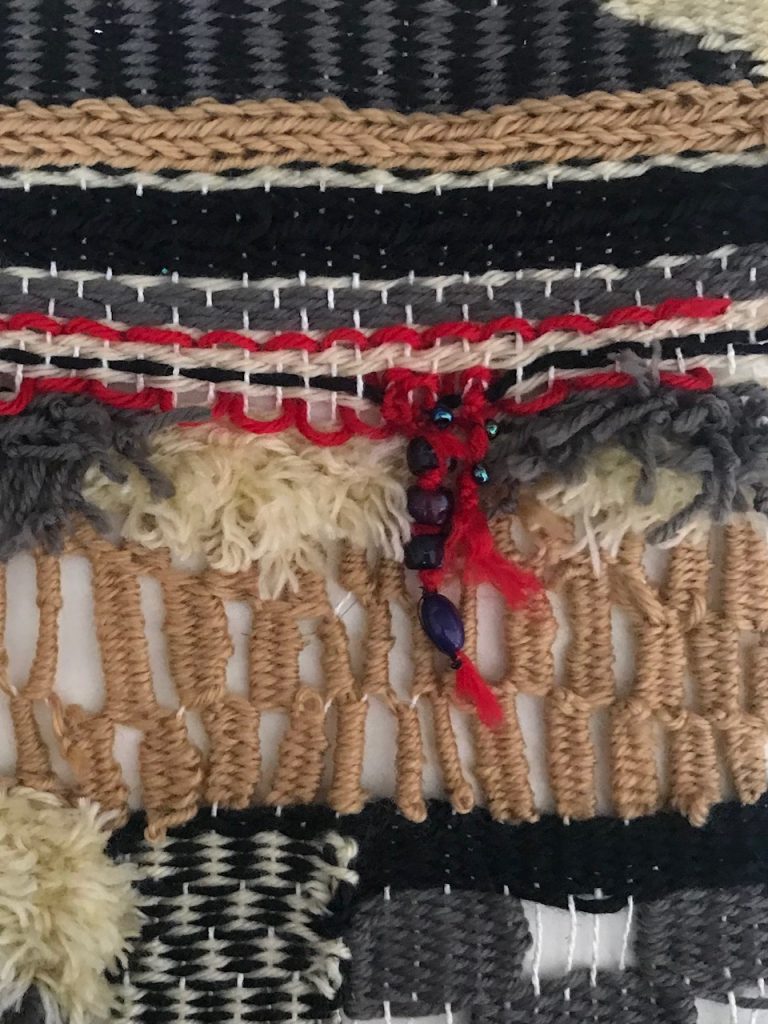This project was challenging for me, but I’m proud of myself for finishing this piece. I used this tapestry weaving to experiment with various stitch techniques and textures, and I learned a lot along the way.
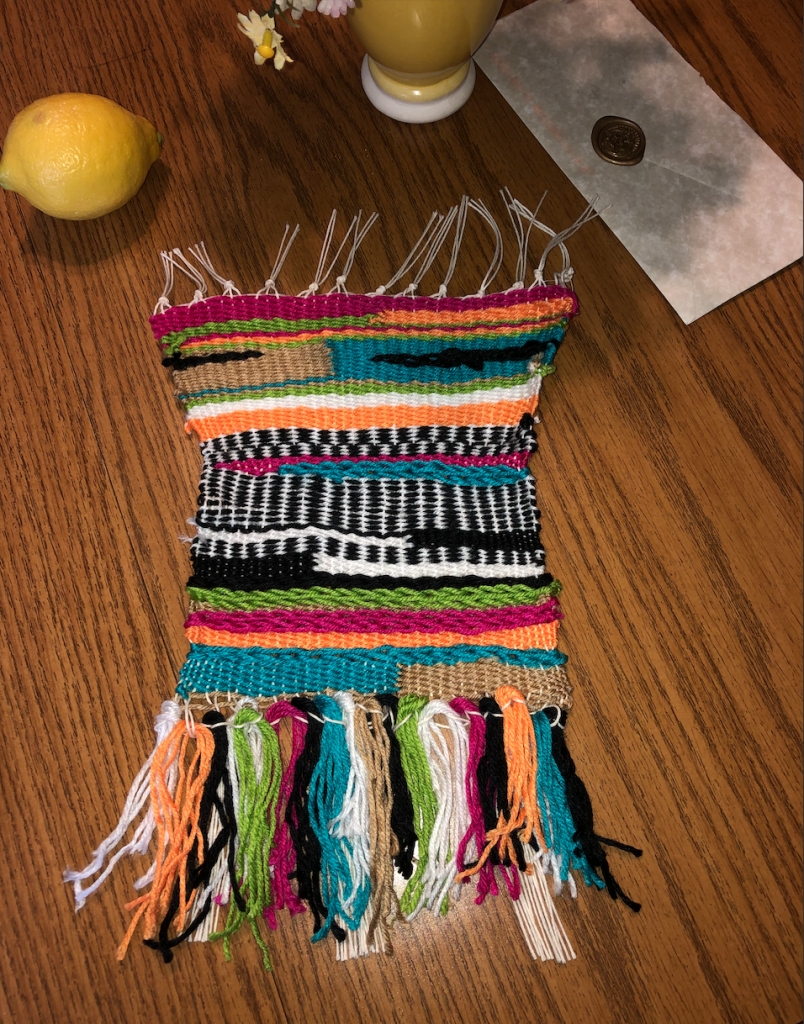
The cardboard loom itself caused the biggest challenges with retaining even tension throughout the weaving. This was a source of a lot of frustration, but I learned to adjust and adapt my weaving and even embrace my mistakes.
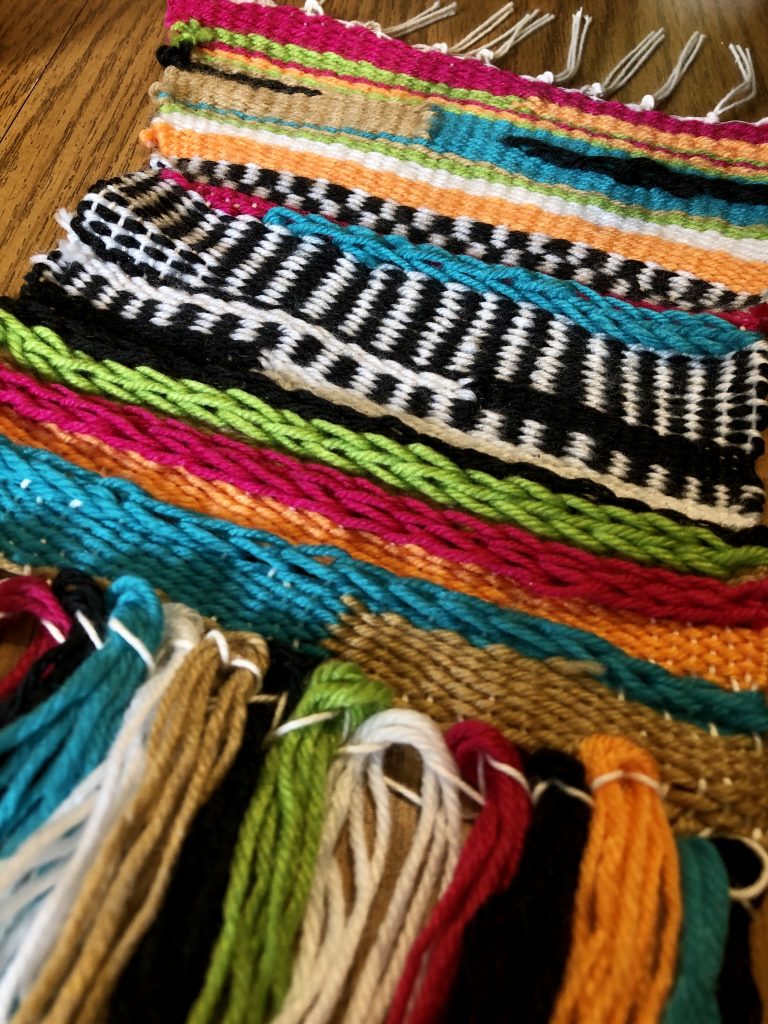
I made impulsive color decisions during my weaving process, but eventually I settled on seven colors to alternate between for variety. I was surprised that changing the color was sometimes enough to emphasize different stitch techniques or even to just make the plain weave sections more interesting.
I experimented with interlocking the weft and using two colors in tandem to create vertical stripes. I also experimented with adding textured elements with added rya knots and soumak stitches. The rya knots sort of fell out when I cut my warp strings to remove my piece from the loom, but I was able to use the simple knot finishing technique to salvage the fringe effect.
Even though the weaving process was frustrating for me at times, taking breaks and returning to my tapestry gave me a fresh head to try to incorporate different stitches to make it more exciting. It felt like returning to an in-progress essay. I would unweave entire sections much like deleting paragraphs as I was trying to make my weaving feel more unified and coordinated.

Since this piece was solely experimental, I have also been surprised by the interpretations I’ve received from my peers so far. One of my friends said it reminded her of a geological cross section, and that provided me with a different perspective on my work that I appreciated.
My piece has grown on me because it’s reflective of my artistic process, and I did get more comfortable as I worked through it. This final image shows how I’ve been playing with displaying my tapestry. I’m inspired by El Anatsui and how his metal cloths change with every installation, and so far I enjoy how bunching my tapestry creates fun waves.

